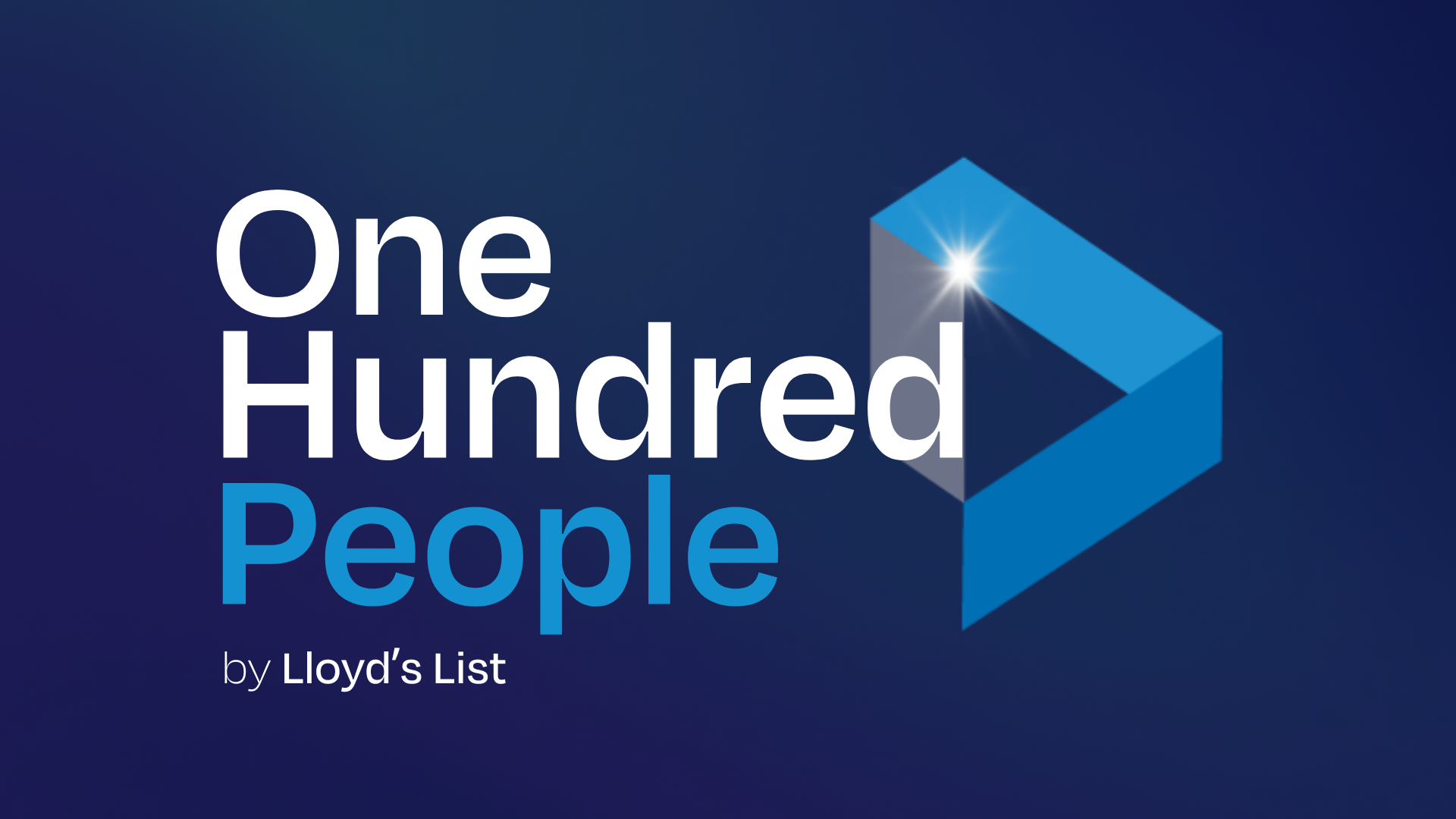
Trump and Rubio Top Lloyd’s List’s Powerbroker Ranking
16th annual ranking reveals One Hundred People shaping global maritime today
US President Donald Trump and Secretary of State Marco Rubio occupy the top two places in the 16th edition of Lloyd’s List One Hundred People, the definitive ranking of the individuals shaping the maritime industry.
Port fees and tariffs were among a host of ‘America First’ policies that disrupted global shipping in 2025, increasing costs and reordering trades routes. In addition, the US Administration’s fierce opposition to emission levies, in concert with Saudi Arabia, resulted in a landmark IMO deal being abandoned and prospects for shipping achieving its net zero ambitions being cast into doubt.
This year’s top ten:
“The Lloyd’s List One Hundred People ranking is the industry’s barometer of influence. Sixteen years on, it charts a sector grappling with threats to free trade, geopolitical headwinds, and stalled emissions policy. At number one sits US President Donald Trump, emblematic of how his political choices have reverberated across maritime trade in 2025. The leaders that follow are those steering shipping through disruption, proving resilience and adaptability remain the true currencies of influence.” said Linton Nightingale, Deputy Editor at Lloyd's List.
The full 16th edition of the One Hundred People ranking is available here: https://www.lloydslist.com/one-hundred-edition-sixteen
For further information and interviews contact Richard.knight@mettlepr.com
About
Lloyd’s List is a Lloyd’s List Intelligence solution providing leading maritime news and analysis.
Lloyd’s List Intelligence delivers trusted maritime data, analytics, and insight to keep global trade moving. Powered by a rich and growing network of intelligence sources, proprietary AIS data, and a global network of analysts, we provide real-time visibility into the world’s fleets, trade flows, and risks. With over 300 years of maritime heritage, we continue to shape the future of trade intelligence to drive smarter, safer, and more transparent trade.
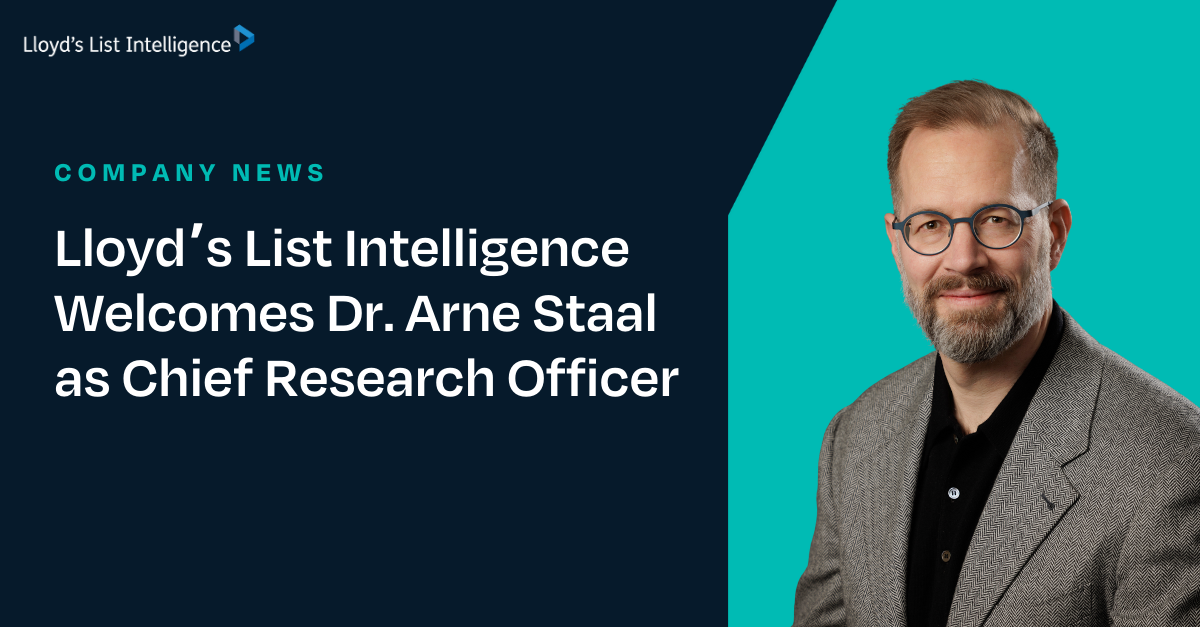
London, December 1st 2025: Lloyd’s List Intelligence (LLI) is pleased to announce the appointment of Dr. Arne Staal as Chief Research Officer (CRO), a newly created executive role reporting directly to the Chief Executive Officer, Waqas Samad. In this role, Arne will unify and elevate LLI’s research, analysis and modelling capabilities to amplify the depth and reach of LLI’s qualitative and quantitative insights.
The Chief Research Officer function will bring together the full spectrum of LLI’s intelligence expertise, including maritime news and insight reporting (Lloyd’s List), counterparty risk analysis (Infospectrum), and LLI’s proprietary quantitative modelling, AI and data science capabilities. This consolidation forms a single, powerful research organisation focused on enhancing the clarity, depth and predictive power of the risk, compliance and market trends LLI delivers to the global market.
As global trade dynamics grow more complex and our customers face heightened regulatory, geopolitical and supply chain uncertainty and pressures, Arne’s leadership will be pivotal in ensuring LLI continues to deliver authoritative, actionable and forward-looking insight to support critical decision-making across the maritime sector.
Arne brings two decades of global leadership experience in leveraging expert knowledge, advanced analytics, and machine learning to drive strategic insight across the financial industry. He most recently served in senior leadership roles at London Stock Exchange Group (LSEG), including Group Head of Product & Research, and CEO of FTSE Russell.
Prior to LSEG, Arne held senior roles across the financial industry, including Global Head of Macro Systematic Strategies and Macro Risk at Aberdeen Standard Investments, Head of Product Research & Innovation for iShares at BlackRock, and European Head of Index Products & Strategy at Barclays Capital.
Waqas Samad, Chief Executive Officer, Lloyd’s List Intelligence, said
“By bringing our analyst, editorial and data science teams under a single leadership structure, we will accelerate the development of powerful new intelligence solutions and enhance the clarity and confidence we provide to the market. This is about applying systematic institutional-grade rigour to our world class maritime data and expertise. I have had the privilege of working extensively with Arne in the past and know the calibre, vision and discipline he brings. He will play a critical role in shaping how we support our customers as the maritime sector and global trade continues to shift toward intelligence-driven decision-making.”

Chennai, India — 21 November 2025
Lloyd’s List Intelligence (LLI), the global leader in maritime data and analytics, marked a major milestone with the official opening ceremony of its new Centre of Excellence in Chennai on 21 November 2025. The inauguration was led by an esteemed delegation of dignitaries from the Government of the United Kingdom and the Government of Tamil Nadu, underscoring the strategic importance of this expansion in strengthening global maritime intelligence capabilities.
The ribbon-cutting was performed by Seema Malhotra, MP, Indo-Pacific Minister, Foreign, Commonwealth & Development Office (FCDO), UK Government, and Dr TRB Rajaa, Minister for Industries, Investment Promotion & Commerce, Government of Tamil Nadu, who jointly declared the Centre of Excellence open, marking the beginning of a transformative chapter in LLI’s global operational strategy.

Singapore/Hong Kong — Lloyd’s List Intelligence has been awarded Best TBML & Trade Compliance Solution at the 8th Regulation Asia Awards for Excellence 2025, celebrated in person on 10 November 2025, for Seasearcher Trade Risk 2.0.
This award recognises innovative solutions tackling trade-based money laundering (TBML), sanctions evasion, and other regulatory risks. The judges looked for solutions that empower trade compliance professionals to conduct risk assessment of trade transactions, focusing on goods, services, entities, and locations, with emphasis on advanced due diligence, document verification, and automation.
Lloyd’s List Intelligence was recognised for its Seasearcher Trade Risk 2.0 platform, which provides a holistic, transaction-level risk assessment across goods, counterparties, vessels, and shipping routes, as well as locations. The solution leverages AI to solve industry problems like HS code classification and integrates data covering approximately 95% of global container movements, global export control regulations, and trade data from more than 200 countries and territories. A key differentiator is its hybrid intelligence model, which offers users access to expert analysts for validation of complex trade documents.
“Seasearcher Trade Risk 2.0 effectively uses advanced technology to identify complex trade risks in real time,” said a judge on the Regulation Asia Awards panel. “Its standout feature is the expert validation option, which provides a crucial human-in-the-loop for ambiguous cases. This hybrid approach of blending powerful AI with human expertise is what the industry needs to enhance due diligence and build more resilient defences against trade-based financial crime.”
About the Regulation Asia Awards for Excellence 2025
The Regulation Asia Awards for Excellence recognises financial institutions, technology companies, legal and consulting firms, exchanges and other players that help ensure the highest regulatory compliance standards are upheld in the financial industry. Each year, senior industry practitioners serve on a judging panel to help assess and score each submission to determine the winning entrants.
For a full list of the 2025 award winners, visit www.regulationasia.com/awards.
About Regulation Asia
Regulation Asia is the leading source of actionable regulatory intelligence for Asia Pacific markets. With over 13,000+ subscribers, including regulatory bodies, exchanges, banks, asset managers and service providers, Regulation Asia plays a key role in shaping the regulatory agenda.
Visit www.regulationasia.com or connect via LinkedIn or Twitter.

London, 13 October 2025
Lloyd’s List Intelligence (LLI), the trusted global provider of maritime data and analytics, today announced the launch of its Ownership Intelligence & Cargo Risk solutions within the Seasearcher maritime intelligence platform. This integrated suite goes beyond standard vessel screening to provide unparallelled visibility into complex ownership structures and maritime trade flows.
The launch comes at a pivotal time, as regulators worldwide intensify scrutiny of maritime trade. The April 2025 OFAC guidance, which specifically targets Iranian petroleum shipping chains, underscores the urgent need for enhanced due diligence and transparency across global shipping networks.
Seasearcher Ownership Intelligence & Cargo Risk solutions were built with today’s complex regulatory landscape in mind, and focus on empowering organisations to navigate today’s increasingly complex compliance environment with confidence and precision.
Seasearcher Ownership Intelligence & Cargo Risk offers those with exposure to maritime trade the ability to:
“In today’s complex maritime compliance landscape, standard vessel screening alone is no longer sufficient,” said Nicky Marlin, Chief Product Officer at Lloyd’s List Intelligence. “Our new solutions represent a step-change in risk visibility by answering two fundamental questions that regulators increasingly demand: who’s truly benefiting and what’s really being transported. By combining deep ownership intelligence and cargo tracking in one platform, we’re eliminating dangerous blind spots and setting a new standard for maritime compliance.”
This breakthrough represents months of intensive development, combining massive volumes of complex, unstructured data with cutting-edge technology and human expertise. LLI’s proprietary SeaTech™ methodology and COACT data quality framework power this sophisticated staged process—from collating and aggregating data to enhancing intelligence—ensuring hidden risks are surfaced with confidence while freeing thousands of analyst hours.
Seasearcher Ownership Intelligence & Cargo Risk supports critical use cases across maritime industries, including pre-transaction screening, customer onboarding, ongoing monitoring, claims and legal support, and enhanced escalation workflows.
Organisations using the integrated solution can ensure compliance with evolving regulations, reduce risk exposure, improve decision-making with verifiable data, streamline due diligence processes, and protect their reputation by avoiding inadvertent involvement in sanctions violations.
For more information about Seasearcher Ownership Intelligence & Cargo Risk solutions, visit: https://www.lloydslistintelligence.com/products/seasearcher/ownership-intelligence-and-cargo-risk
About Lloyd’s List Intelligence
For over 290 years, Lloyd’s List Intelligence has been the trusted independent partner for monitoring, assessing, and managing maritime risks. Leveraging unparalleled expertise and technology, we provide actionable insights and solutions that empower professionals across insurance, trade finance, shipping, and government sectors to make data-driven decisions with confidence.
To learn more about Lloyd’s List Intelligence, visit www.lloydslistintelligence.com.

Maritime risk assessment is complex and demands reliable, comprehensive information on vessel quality and compliance, data that is often fragmented and difficult to access.
Against a backdrop of heightened geopolitical tensions, increasingly complex sanctions regimes, and growing scrutiny on supply chain transparency, the need for more rigorous vessel inspection and due diligence has never been greater. Financial institutions, insurers, and charterers are under pressure to prove compliance, mitigate operational risk, and make faster, more confident decisions in an environment where the stakes continue to rise.
To address this challenge, Lloyd’s List Intelligence has partnered with Idwal, one of the world’s leading provider of standardised vessel inspections and ship condition intelligence. This collaboration brings together Idwal’s unique grading methodology, the Idwal Grade®, with Lloyds List Intelligence’s sanctions and maritime risk screening analytics, enabling insurers, financiers, charterers, and operators to seamlessly access a comprehensive view of physical and regulatory vessel risk.
Benefits of the integration
For Lloyd’s List Intelligence Seasearcher users, the partnership means that customers can now access the Idwal Grade directly within their workflows. This provides a fast, objective benchmark of vessel quality using a standardised grading methodology trusted across the industry. By combining this vessel condition data with Lloyd’s List Intelligence’s sanctions, ownership, and operational risk analytics, Seasearcher users gain a far more complete perspective of vessel risk to strengthen underwriting, compliance, and chartering decisions.
For Idwal users
For customers using Idwal’s platform, the integration brings Lloyd’s List Intelligence’s sanctions and maritime risk screening data directly into vessel inspection reports. This means that due diligence processes become richer and more efficient, enabling faster, more confident decision-making when it comes to chartering, underwriting, or lending. By embedding regulatory and ownership insights into inspection workflows, Idwal users benefit from a more holistic view of vessel risk in a single environment.
For those seeking a combined solution
For organisations that are not yet customers of either platform, this partnership delivers something new: a single, joined-up view that unites physical vessel condition with sanctions, ownership, and operational risk intelligence. It offers a powerful solution for those who need both sides of the picture — vessel condition and maritime risk evaluation — to ensure compliance, manage exposure, and unlock opportunities with greater confidence.
Delivering clarity and efficiency
“We are committed to empowering our users with a sharper, data-driven view of maritime safety that delivers a single, comprehensive perspective on risk. Partnering with Idwal allows us to provide a simple, integrated way to assess vessel risk, reduce uncertainty, and protect our customers’ business.” – Nicky Marlin, Chief Product Officer, LLI.
“By bringing our capabilities together, Idwal and Lloyd’s List Intelligence are delivering a clearer, shared benchmark for vessel risk. Uniting vessel condition insights with regulatory and ownership risk reduces uncertainty by providing a consistent, auditable view of risk that stands up to scrutiny and helps customers act faster, with confidence, compliance and rigour.” – Dai Evans, Chief Technical Officer, Idwal.
This partnership reflects a shared mission: to bring greater transparency, efficiency, and confidence to maritime markets. By uniting Idwal’s vessel condition expertise with Lloyd’s List Intelligence’s market leading data, analytics, and risk evaluation, the industry gains a new benchmark for assessing and managing vessel risk, reducing uncertainty, and strengthening compliance strategies.

Lloyd’s List Intelligence (LLI) is to integrate Vortexa’s advanced Cargo Risk Ratings into its flagship Seasearcher platform. This strategic enhancement will provide clients with heightened real time visibility into cargo risk, ownership, and freight patterns, fuelling smarter, more confident maritime decisions.
LLI will also be partnering Vortexa as a sponsor of the upcoming Innovation Series 2025: fast paced, insight driven forums taking place across, London (18 September), and New York (25 September).
Transforming Seasearcher with Cargo Risk Intelligence
The integration of Vortexa’s Cargo Risk Ratings into Seasearcher will enrich LLI’s vessel risk and ownership workflow, providing granular, dynamic insights into shipping risk exposures and cargo movements. By leveraging Vortexa’s market leading tracking analytics and LLI’s trusted AIS, ownership and compliance datasets, this enhancement delivers unprecedented clarity and precision in maritime risk analysis.
It also supports LLI’s ongoing mission to innovate within Seasearcher, bolstering its status as the go to platform for cargo risk, ownership transparency and maritime operational intelligence.
Championing Innovation with Vortexa’s Global
As a sponsor of the Innovation Series 2025, LLI is proud to support a unique, immersive meeting of energy and Series maritime thought leaders. Blending expert insight, real time analytics and dynamic networking, the Series, now in its fourth year, delivers high value future-facing content for professionals - without the fluff of typical trade events.
Dates and venues are:
Empowering Maritime Decision Making
“We are delighted to further our partnership with Vortexa by embedding their Cargo Risk Ratings into Seasearcher,” said Waqas Samad, CEO, Lloyd’s List Intelligence. “This integration strengthens our mission to deliver actionable insight, situational awareness, and transparency across the maritime ecosystem. By sponsoring the Innovation Series, we’re not only enriching our platform but also helping foster a global community committed to innovation in energy and freight analytics.”
For further information contact: : +44 (0)20 7017 5392
About Lloyd’s List Intelligence
For nearly three centuries, Lloyd’s List Intelligence has been a steadfast partner to shipping, insurance, finance, and government sectors worldwide; delivering trusted maritime insight, analytics, vessel and risk intelligence. Platforms like Seasearcher, powered by advanced data functions such as emissions performance, AIS tracking (AIS SeaOrbis), trade risk workflows, and now cargo risk ratings, reflect LLI’s commitment to innovation, transparency, and precision.
About Vortexa
Vortexa is a leader in real time energy and freight analytics, covering global flows of crude oil, refined products, LPG, and LNG across vessel classes. Their Cargo Risk Ratings and advanced tracking analytics help trading, insurance, and freight professionals navigate volatile markets with confidence. Vortexa operates globally, with hubs in London, Singapore, Houston, New York, Geneva, and the UAE.
About the Vortexa Innovation Series
So much more than your standard industry event, Innovation Series London is a fast-paced, insight-driven forum where freight and energy professionals can gain the insider perspective and real-world context needed to thrive in today’s highly volatile markets.
.png?w=1200)
London, 4 September 2025
Lloyd’s List Intelligence (LLI) has appointed Jan-Paul Boos as Chief Revenue Officer. Jan-Paul originally joined LLI in January 2025 as interim CRO while a Partner and Portfolio CRO at Montagu Private Equity, who acquired the business in 2022. He now takes on the role permanently as LLI accelerates its global growth and expands its portfolio of data-driven solutions for the maritime industry.
With more than 25 years’ experience in data-subscription, supply chain and global trade technology, Jan-Paul has held senior leadership roles at Manhattan Associates, BluJay Solutions, and E2open, where he built international teams and scaled products across more than 50 countries. He now brings this global expertise to Lloyd’s List Intelligence, working alongside CEO Waqas Samad and the senior management team to grow the business and deliver greater value to customers during a period of unprecedented change.
Maritime is front of mind in a way that it has rarely, if ever, been before— from shifting geopolitics and expanding sanctions to the rise of spoofed vessel signals and shadow fleets. Against this backdrop, demand for trusted data and actionable intelligence has never been higher. LLI is meeting this challenge by combining its unrivalled datasets, advanced analytics, and subject matter expertise to help customers manage risk, ensure compliance and protect investments.
“Since joining LLI earlier this year, I’ve seen first-hand the impact our data and expertise have on the professionals who keep global trade moving,” said Jan-Paul. “This is an incredibly exciting time to be involved in maritime data. At LLI we are constantly innovating, finding new ways to deliver more value to our customers day in, day out. Our focus is on giving them the insight, tools and confidence to succeed., and we strive every day to earn that privilege.”

Lloyd’s List Intelligence is delighted to announce the appointment of Waqas Samad as Chief Executive Officer. In his role, Waqas will spearhead the Company’s ongoing global expansion and drive ambitious innovation initiatives, ensuring that as geopolitical developments reshape global trade and heighten the strategic importance of the maritime sector, the Company continues to deliver comprehensive and forward-looking trade intelligence solutions.
Waqas brings more than three decades of global experience at the intersection of finance, data and technology. He has held senior leadership roles at London Stock Exchange Group (LSEG), including as a member of its Executive Committee and as CEO of FTSE Russell. Prior to that he served as CEO of Barclays Risk Analytics and Index Solutions.
Waqas succeeds Michael Dell who has led the business since 2018. Under Michael’s leadership, Lloyd’s List Intelligence successfully transitioned into a fully standalone business following its carve-out from Informa PLC, launched a modern portfolio of solutions to support stakeholders across the maritime ecosystem, and built a world-class leadership team. The business has grown profitably since becoming independent, delivering record-high organic growth rates and completing its first acquisition in January 2025. With this strong foundation in place, the company is well-positioned to enter its next chapter. Michael will transition to a Board advisory role to support the company’s continued growth.
Waqas joins at a pivotal moment in the company’s journey as Lloyd’s List Intelligence accelerates its growth strategy. His proven track record of rapidly scaling complex businesses, driving innovation and delivering client-centric solutions will be central to unlocking new opportunities across global markets.

Lloyd’s List Intelligence Launches Emissions Performance Data in Seasearcher, in Partnership With Siglar Carbon
London, June 16, 2025: Lloyd’s List Intelligence today announces the launch of integrated emissions performance data in Seasearcher, developed in partnership with carbon analytics specialist Siglar Carbon. This class-leading new feature transforms emissions compliance into commercial intelligence, helping shipping stakeholders make faster, greener and more strategic decisions.
With the global rollout of carbon pricing schemes and increasing pressure on ESG performance, emissions transparency is no longer optional. A new survey suggests the industry is already struggling with compliance complexity, with 60% of shipowners failing to file EU emissions reports on time.
Seasearcher’s new emissions capability is the solution. It lets users track, record, and analyse their emissions and benchmark them against competitors, providing unparalleled visibility into vessel and voyage-level performance. Uniquely, data for ongoing voyages can be updated every 24 hours, rather than upon completion, with commercially-critical information automatically validated in real-time, allowing for changes in speed and carbon price.
“Partnering with Siglar Carbon brings best-in-class emissions analytics directly into Seasearcher workflows,” said Ross Paterson, Senior Product Manager, Lloyd’s List Intelligence. “By combining our vessel tracking and fleet intelligence with Siglar’s granular emissions insights, we’re enabling our customers to turn regulatory pressure into a competitive advantage.”
Seasearcher emissions data provides:
Seasearcher emissions data is available now as a premium add-on.
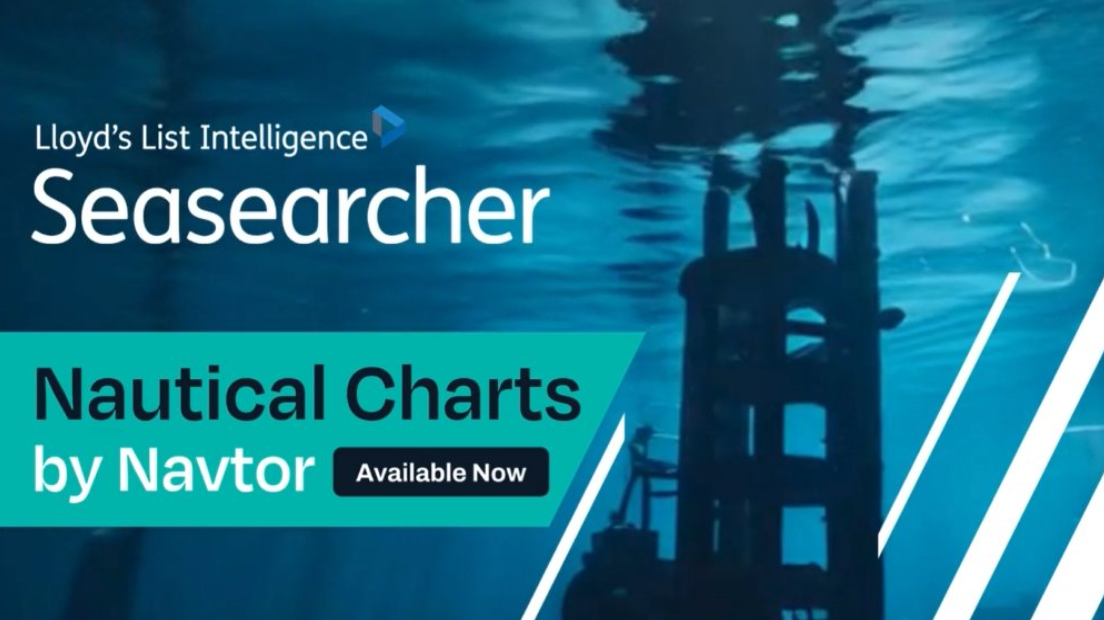
Seasearcher, the leading maritime intelligence platform, today launches Nautical Charts by Navtor, a powerful new feature that integrates detailed nautical overlays into Seasearcher’s vessel tracking platform. Designed for legal, insurance, and government professionals, Navtor Nautical Charts delivers complete and effortless situational awareness, helping users streamline claims investigations, reduce risks, and make faster, more accurate decisions.
By seamlessly combining AIS vessel tracking data with underwater infrastructure, water depth charts and critical landmarks, Seasearcher eliminates the need for manual data layering across multiple platforms. The result is a faster, more reliable investigative process that helps professionals uncover critical details that might otherwise be missed.
“The threats to critical underwater infrastructure are growing with new challenges developing" said Sophie Pallier, Senior Product Manager, Lloyd’s List Intelligence. "By combining Navtor’s global maps showing landmarks, infrastructure, objects navigational symbols (and more!), with Seasearcher’s AIS data, we are helping legal, insurance, and government sectors to understand what is happening situationally around the vessel or infrastructure of interest, to better support investigations."
Why Choose Seasearcher’s Nautical Charts?
Nautical Charts by Navtor is available now as a premium add-on within Seasearcher.
Learn more or schedule a demo at: https://www.lloydslistintelligence.com/products/seasearcher#nautical-charts
About Lloyd’s List Intelligence
For over 290 years, Lloyd’s List Intelligence has been the trusted independent partner for monitoring, assessing, and managing maritime risks. Leveraging unparalleled expertise and technology, we provide actionable insights and solutions that empower professionals across insurance, trade finance, shipping, and government sectors to make data-driven decisions with confidence.
To learn more about Lloyd’s List Intelligence, visit www.lloydslistintelligence.com.
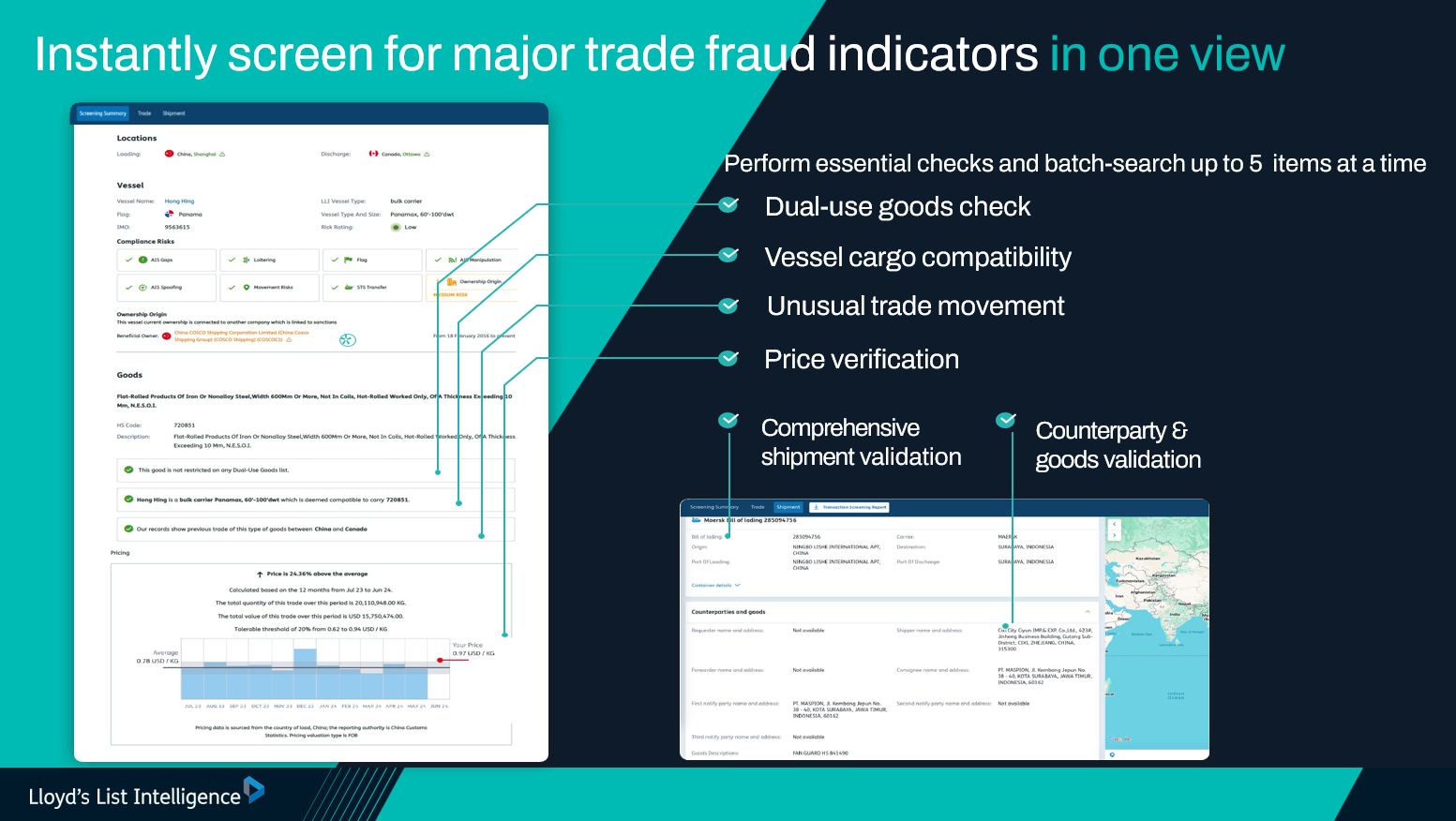
With trade finance fraud believed to cost the industry as much as US$5 billion every year, it has never been more important than now for financial institutions to exercise rigorous due diligence across all trade modes. Today, Lloyd’s List Intelligence has added enhanced due diligence screening functionality to its Seasearcher Trade Risk platform to greater support financial institutions in the ongoing battle against trade-based money laundering and fraud.
Building upon the successful 2024 launch, the enhanced Seasearcher Trade Risk now offers comprehensive validation across both containerised and bulk shipments, with expanded screening tools designed to quickly identify suspicious patterns and potential trade finance fraud.
As governments worldwide demand higher levels of due diligence from financial institutions to tackle money laundering and sanctions evasions, bad actors continue to develop increasingly complex methods to hide illicit activities across various trade modes.
Enhanced capabilities for collaborative risk management
As of today, Seasearcher Trade Risk now encompasses:
A single platform for identifying seaborne trade risk
Michael Dell, CEO, Lloyd’s List Intelligence: “By expanding our capabilities to cover all trade modes and offering comprehensive validation of shipments, counterparties, and goods, we’ve created a single platform that instantly screens for major trade fraud indicators. This enables our clients to prevent fraud, protect their reputation, maintain compliance, and significantly reduce the time and resources needed to conduct thorough due diligence.”
About Lloyd’s List Intelligence
For over 290 years, Lloyd’s List Intelligence has been the trusted independent partner for monitoring, assessing, and managing maritime risks.
Leveraging unparalleled expertise and technology, we provide actionable insights and solutions that empower professionals across insurance, trade finance, shipping, and government sectors to make data-driven decisions with confidence.
To learn more about Lloyd’s List Intelligence, visit www.lloydslistintelligence.com.
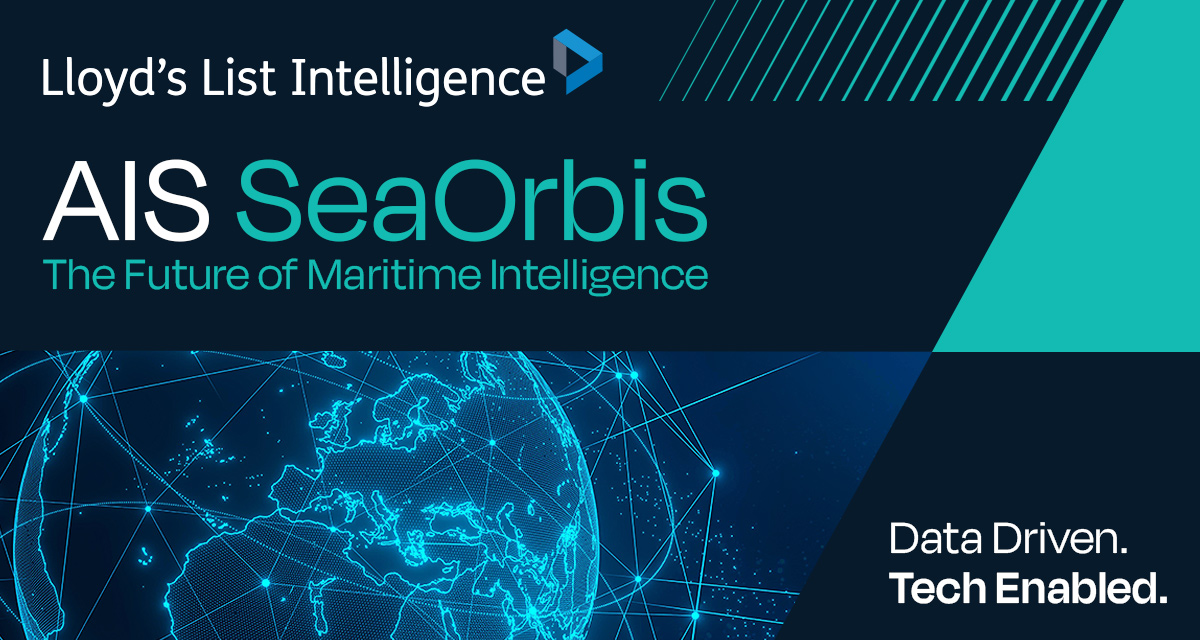
Lloyd’s List Intelligence has introduced AIS SeaOrbis, a new AIS vessel tracking intelligence delivering unmatched coverage, accuracy and reliability. By combining terrestrial, shipborne, and satellite AIS data, AIS SeaOrbis provides a secure, resilient and comprehensive picture of global vessel movements, in real time, enabling smarter, data-driven decisions across the maritime industry.
What makes AIS SeaOrbis different?
AIS SeaOrbis enhances AIS intelligence by integrating:
This multi-source approach provides unparalleled accuracy with reduced blind spots, and near real-time tracking, making AIS SeaOrbis the most comprehensive AIS intelligence available.
Who benefits from AIS SeaOrbis?
AIS SeaOrbis supports government agencies, insurers, commodity traders, financial institutions, and shipping professionals with:
"AIS SeaOrbis is a game-changer for vessel tracking intelligence. By fusing terrestrial, shipborne, and satellite AIS, we’re providing the most complete and reliable picture of global vessel activity. Our customers can track, analyse, and act with confidence, ensuring they stay ahead in an evolving maritime landscape."
— Michael Dell, CEO, Lloyd’s List Intelligence
AIS SeaOrbis is available via API, FTP, and custom analytics, integrating seamlessly into existing workflows. Learn more here.
About Lloyd’s List Intelligence
For over 290 years, Lloyd’s List Intelligence has been the trusted independent partner for monitoring, assessing, and managing maritime risks. Leveraging unparalleled expertise and technology, we provide actionable insights and solutions that empower professionals across insurance, trade finance, shipping, and government sectors to make data-driven decisions with confidence.
To learn more about Lloyd’s List Intelligence, visit www.lloydslistintelligence.com.
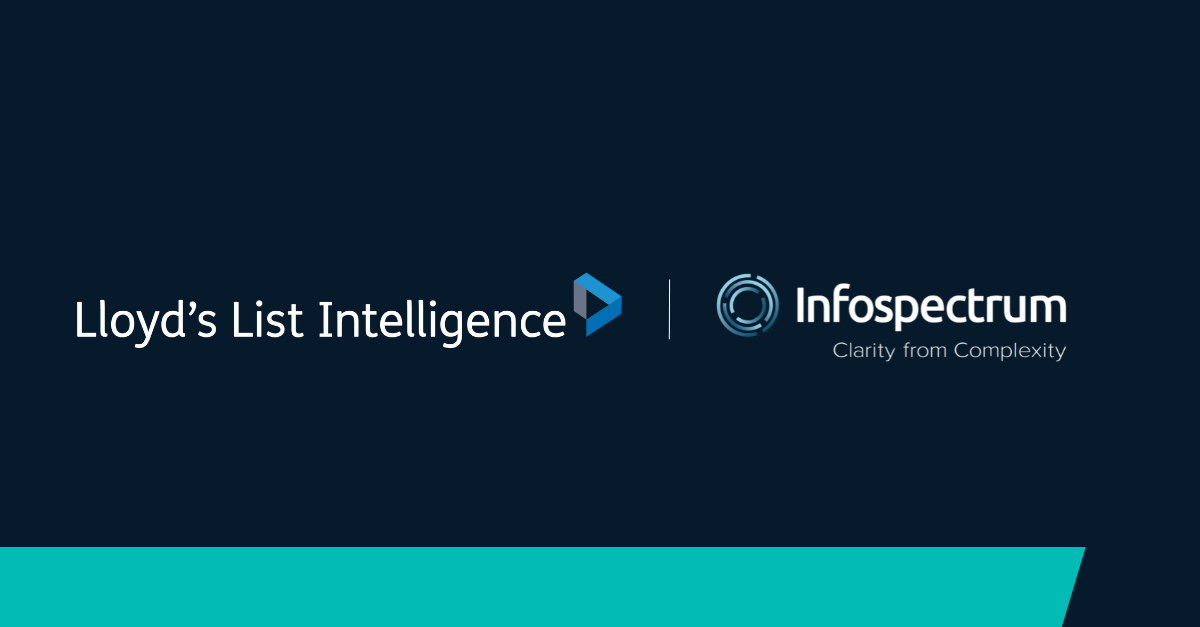
14 January 2025, London: Lloyd’s List Intelligence, a leading maritime data, insights and analytics provider, today announces the acquisition of Infospectrum, an independent provider of counterparty risk appraisal reports & data, due diligence research and KYC intelligence.
This acquisition expands Lloyd’s List Intelligence’s ability to deliver market-leading analysis and risk management intelligence solutions. The integration of Infospectrum’s comprehensive counterparty risk appraisal, due diligence and KYC intelligence capabilities and data, will enable the combined business to provide customers with more accurate, reliable, and timely risk based decision-making solutions. With the maritime sector facing increasing complexity from global sanctions, compliance, safety, geo-political and legal considerations, the combination will enable LLI to build solutions that deliver actionable insights and help customers successfully navigate key use cases associated with compliance, risk management and operations.
“The acquisition of Infospectrum is an important milestone for Lloyd’s List Intelligence,” said Michael Dell, CEO, Lloyd’s List Intelligence. “This acquisition is a significant step forward in our mission to provide the most comprehensive and insightful risk intelligence solutions that support the global maritime industry. By combining our respective strengths, we will deliver stronger capabilities to our customers and enhance our ability to act as a provider of mission critical data, insights and analytics for the maritime sector as a whole.”
"We are excited to join forces with Lloyd’s List Intelligence” said Panos Panousis, MD, Infospectrum. “This combination will unlock significant opportunities for both companies and provide the maritime ecosystem with access to a broader range of data, analytics, and intelligence. We are confident that together we will accelerate innovation and deliver exceptional solutions to the maritime industry."
For more information on Infospectrum, visit www.infospectrum.net
For more information on Lloyd's List Intelligence, visit www.lloydslistintelligence.com
About Infospectrum
Infospectrum is an independent global provider of counterparty risk appraisal reports and ratings, due diligence research, KYC intelligence, and supporting solutions.
About Lloyd’s List Intelligence
Lloyd’s List Intelligence is the industry expert for maritime insight, data, and analytics trusted by more than 60,000 professionals across the globe to evaluate risk and support the efficient and lawful movement of seaborne trade.
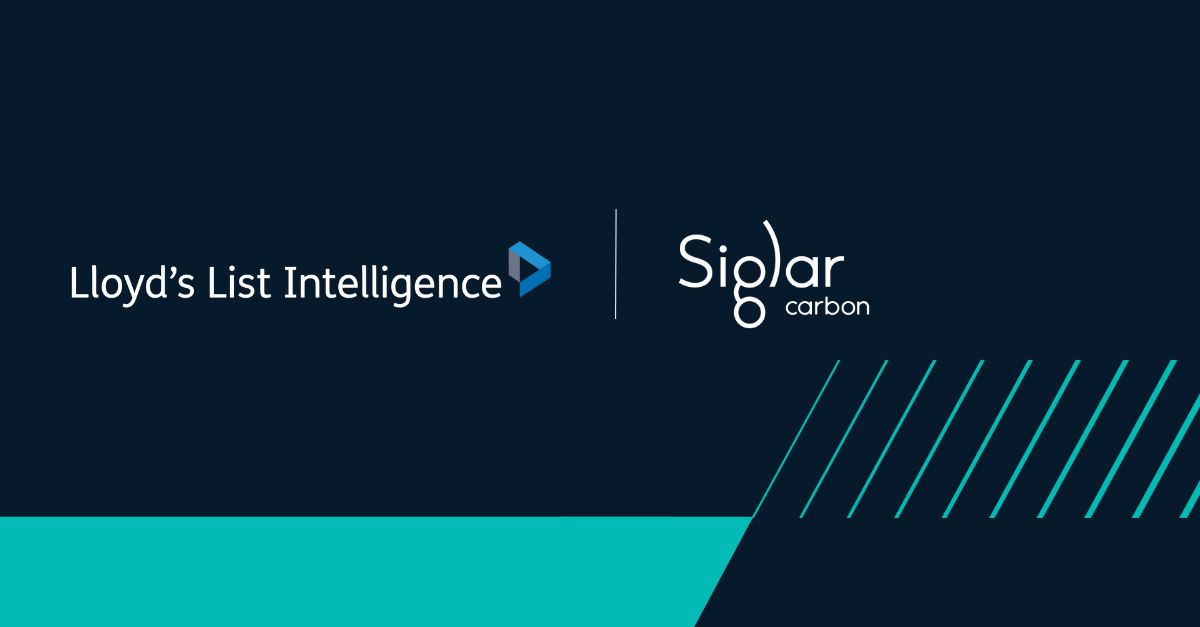
Lloyd’s List Intelligence and Siglar Carbon combine forces to drive greater awareness and insight on global vessel emissions performance.
1st December 2024, London: Lloyd’s List Intelligence (LLI), a leading provider of maritime data, insights, and analytics, and Siglar Carbon, a pioneer in maritime emissions performance analytics, today announced a strategic partnership to drive greater awareness in the provision of information relating vessel emissions performance across the maritime industry aligned to EU ETS and Fuel EU market frameworks.
This collaboration will combine LLI’s deep understanding of the maritime market and its comprehensive Risk & Compliance, Insurance and Legal solutions, with Siglar Carbon’s expertise in emissions data analytics and sustainable chartering strategies. By leveraging their combined strengths, the two companies will deliver innovative solutions that empower those financing, insuring or vetting vessel and a wide universe of companies that supply services in the maritime ecosystem to understand how the vessels they engage perform, making more informed decisions and reducing the potential environmental impact.
“This partnership with Siglar Carbon is a significant milestone in supporting and enabling stronger awareness of GHG emissions exposure and efficiency across the shipping sector.” said Michael Dell, CEO, Lloyd’s List Intelligence. “The partnership will bring together complementary data that can help our customers navigate the complexities of the global shipping industry, driving an enhanced emissions understanding, and enabling more informed decisions.”
“Adding Siglar’s valuable emissions insights will give our customers an enhanced emissions understanding, and enable more informed decisions.”
“We are very pleased to be working with a maritime organisation that has such an historic pedigree and strong position in the industry. With this partnership new decision-makers in commercial shipping will get access to our leading emissions insight.” said Sigmund Kyvik, CEO, Siglar Carbon.
“Having access to the Lloyd’s leading vessel specifications and movement data enable us to further strengthen our emissions insights.”
This powerful partnership will enable enhanced decision-making by integrating Siglar Carbon’s emissions insights into LLI’s ‘Seasearcher’ platform, enabling its customers to gain access to a comprehensive view of vessel emissions, fuel consumption, and operational efficiency.
Siglar Carbon will gain access to LLI’s market leading AIS data coverage and detailed vessel characteristics of the worlds commercial fleet. This vast dataset will allow Siglar Carbon to enhance their advanced data and analytics models, whilst supporting their emissions management tools and services they offer to the shipping, trading and chartering community.
Siglar Carbon will gain access to LLI’s market leading AIS data coverage and detailed vessel characteristics of the worlds commercial fleet. This vast dataset will allow Siglar Carbon to enhance their advanced data and analytics models, whilst supporting their emissions management tools and services they offer to the shipping, trading and chartering community.
Lloyds List Intelligence and Siglar Carbon will work together to develop and deploy innovative tools and services that support the maritime industry’s transition to a low-carbon future, helping the acceleration towards a decarbonized maritime sector.
For more information on Lloyd’s List Intelligence, visit www.lloydslistintelligence.com.
For more information on Siglar Carbon, visit www.siglarcarbon.com.
About Lloyd’s List Intelligence
Lloyd’s List Intelligence is the industry expert for maritime insight, data, and analytics trusted by more than 60,000 professionals across the globe to evaluate risk and support the efficient and lawful movement of seaborne trade.
About Siglar Carbon
Siglar Carbon is a maritime emissions analytics company that provides actionable emissions insights to the shipping industry. Their insights enable commercial stakeholders in shipping to make more informed decisions to reduce emissions and the related cost exposure.
Register your interest to stay informed
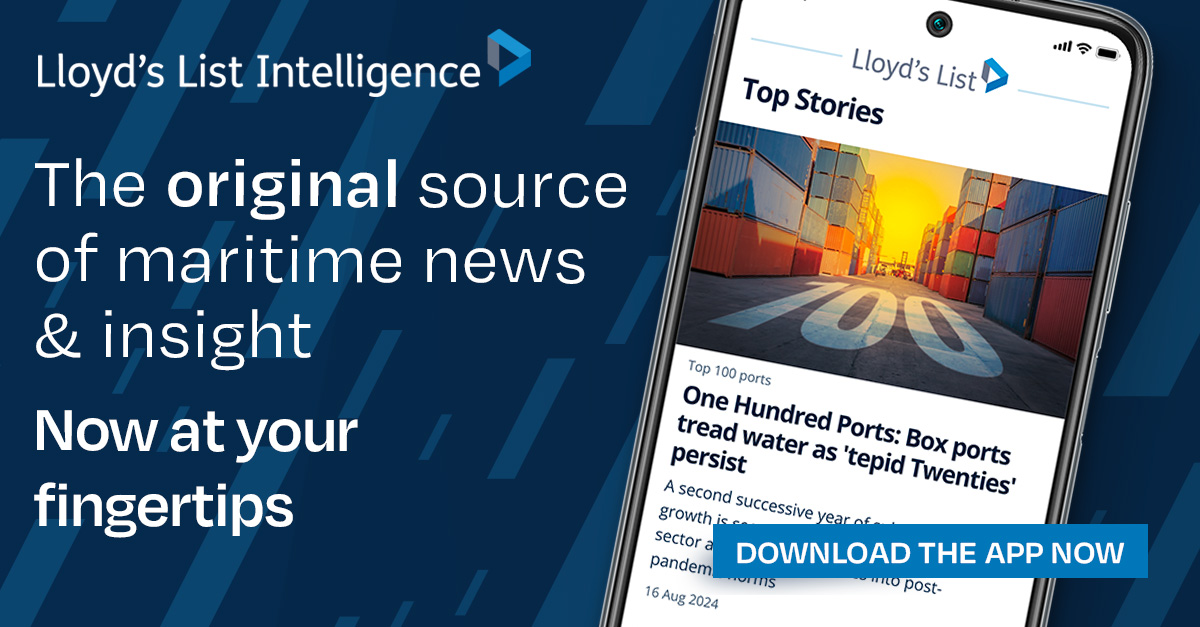
4th November 2024, London: Lloyd’s List has been the trusted source for news and intelligence about the global shipping industry for nearly 300 years. Now its award-winning journalism and expert analysis are available instantly, anywhere, with the launch of the new Lloyd’s List App.
Available on the App Store for iOS users and Google Play store for Android devices, the new Lloyd’s List App has a suite of customizable features to keep users connected to the trends, issues and events that matter in maritime, including:
The App offers direct access to the Lloyd’s List Podcast, the go-to place for leaders in maritime to share industry insights. It also provides a personalized gateway to the latest intelligence on key topics such as markets, risk, sanctions, decarbonisation, insurance and finance.
Lloyd’s List subscribers are invited to download the App and log in using their current website credentials. Non-subscribers can sign up, for free, to access specially curated content and receive general notifications.
Since its inception as a weekly update pinned to the wall of a London coffee house, Lloyd’s List has set the standard for maritime information. The new App is part of an exciting evolution of the brand masterminded by parent company, Lloyd’s List Intelligence, built around the ethos: ‘data driven, technology enabled’.
“Just as the shipping industry has evolved and adopted new technology over the past 300 years, Lloyd’s List has moved with the times and ensured that our subscribers continue to get the best quality information delivered when and how they need it,” explained Lloyd’s List editor in chief Richard Meade.
Adam Sharpe, VP, Editorial for Lloyd’s List Intelligence added: “Our customers have told us about the need to get access to Lloyd’s List as easily as possible when they are on the move, as well as cutting through the noise and focusing on the news and analysis most relevant for them. The Lloyd’s List app delivers this and more.”
For more information, please contact brand@lloydslistintelligence.com
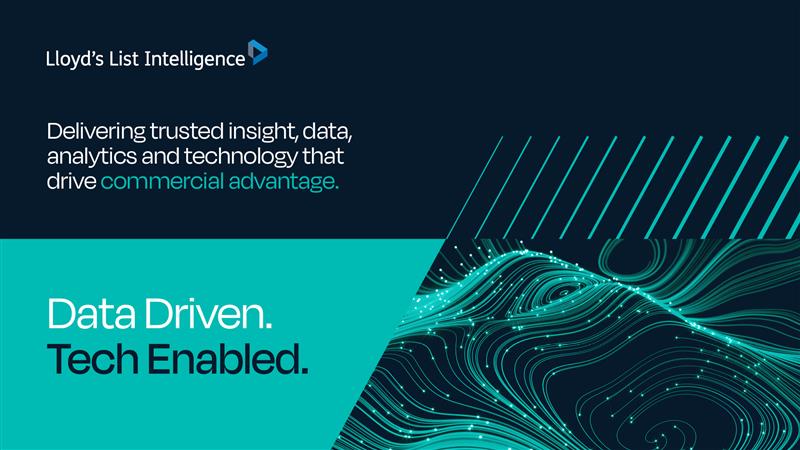
30th October 2024, London: Lloyd’s List Intelligence, the maritime data, insights, analytics and technology company, today launched a dynamic new brand positioning, one that brings together our data driven, technology enabled capability.
Professionals around the world rely on Lloyd’s List Intelligence to provide clarity and transparency to seaborne trade, with over 290 years in delivering commercial maritime information and data. Recent world events have underlined the importance of shipping to the global economy, and its unique exposure both to geopolitical shocks and the impacts of global warming. In this fast-changing world Lloyd’s List Intelligence remains essential and constant, helping its users navigate their way through risk and uncertainty.
Our brand has long been synonymous with trusted data and expert insight. We are now building on this legacy, and evolving our offering, to ensure our customers and partners can make decisions with confidence and keep their operations safe and secure, whatever the future brings.
A new look and future-proofed approach
Lloyd’s List Intelligence exists to support seaborne trade through change by combining data transparency, innovative technology and human ingenuity. We deliver trusted insight, data and analytics that drive commercial advantage, evaluate risk and support the safe, efficient and legal movement of trade. We do this powered by data, enabled by technology and accelerated through human ingenuity.
Data Driven. Tech Enabled.
Our new look and positioning heralds a bold next chapter for Lloyd’s List Intelligence. It will also be the gateway to a raft of exciting new solution enhancements coming to market in 2025.
Michael Dell, CEO, Lloyd’s List Intelligence, said, "Shipping is the engine of the global economy. When it is disrupted, everyone feels the effects, especially the thousands of professionals working in shipping, insurance, finance, commodities, government and law who keep global trade moving. We are evolving our business so we can continue to best serve them. Nearly three centuries after pioneering the concept of maritime information, Lloyd’s List Intelligence is still defining the state of the art and supporting our customers’ decision making through our data, analytics, workflow integration and information. Through almost three centuries of seismic change, we have proven our constant ability to innovate.
Visit www.lloydslistintelligence.com or contact Richard.knight@mettlepr.com for further information.
About Lloyd’s List Intelligence
Lloyd’s List Intelligence is the industry expert for maritime insight, data, and analytics trusted by more than 60,000 professionals across the globe to drive commercial advantage, evaluate risk, and support the efficient and lawful movement of seaborne trade.
Lloyd’s List Intelligence traces its history back to 1734 with the publication of Lloyd’s List of vessel arrivals and departures in London. Today, Lloyd’s List Intelligence uses advanced analytics, artificial intelligence, and industry expertise to transform unparalleled data into powerful insight. Coverage and expert commentary across the maritime and insurance industries keep professionals well informed of developments and what they mean to businesses and markets around the globe. Comprehensive legal resources of case summaries, reports, and judgments across maritime and other specialist practice areas of law include the only library with full verbatim judgments in court-ready format so that professionals can quickly and confidently research cases. Our unique data and analytics services, news and commentary, and publications help professionals in maritime operations, risk, and compliance make confident decisions.
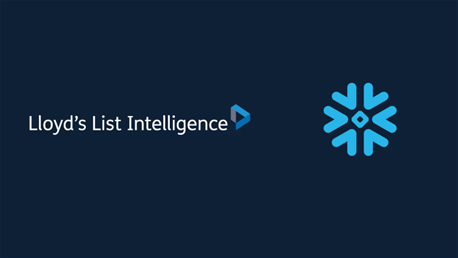
23rd September 2024, London: Lloyd’s List Intelligence, the maritime data, insights and analytics company, today announced that its industry leading information and services will be available on Snowflake’s cloud-based platform. Real-time and historical maritime datasets can now be seamlessly integrated into existing workflows so customers can make informed, data-driven decisions - faster.
Lloyd’s List Intelligence has the most accurate and reliable information on vessel movement, ownership, risk and compliance. With c.1 trillion data-points readily accessible via Snowflake, customers can query and analyse very high volumes of real-time AIS and risk-focused datasets in seconds. Secure data pipelines can be built in moments, without the need for in-house API expertise. Actionable insights can be achieved quicker and with less effort.
Michael Dell, CEO, Lloyd’s List Intelligence, said, "Our integration with Snowflake represents a major step forward in how our customers access and leverage Lloyd’s List Intelligence data. By streamlining data workflows and providing near-instant access to our expansive datasets, we're empowering businesses to make faster, smarter decisions. Whether it's real-time vessel tracking, ownership details, or compliance data, the ability to seamlessly integrate this information into existing systems will help our customers gain a crucial edge in a highly competitive maritime market."
Customers can migrate Lloyd’s List Intelligence data into their existing systems, or leverage Snowflake’s inbuilt data visualisation and reporting capabilities. A suite of data delivery mechanisms are available via the platform, including:
The new deal with Snowflake underscores Lloyd’s List Intelligence’s commitment to making the best maritime insight ever more accessible and useful for the tens of thousands of professionals around the world who rely on it, every day, to help drive the safe, efficient and lawful movement of trade by sea.
About Lloyd’s List Intelligence
Lloyd’s List Intelligence is the industry expert for maritime insight, data, and analytics trusted by more than 60,000 professionals across the globe to drive commercial advantage, evaluate risk, and support the efficient and lawful movement of seaborne trade.
Lloyd’s List Intelligence traces its history back to 1734 with the publication of Lloyd’s List of vessel arrivals and departures in London. Today, Lloyd’s List Intelligence uses advanced analytics, artificial intelligence, and industry expertise to transform unparalleled data into powerful insight. Coverage and expert commentary across the maritime and insurance industries keep professionals well informed of developments and what they mean to businesses and markets around the globe. Comprehensive legal resources of case summaries, reports, and judgments across maritime and other specialist practice areas of law include the only library with full verbatim judgments in court-ready format so that professionals can quickly and confidently research cases. Our unique data and analytics services, news and commentary, and publications help professionals in maritime operations, risk, and compliance make confident decisions.

Lloyd’s List Intelligence, the ship tracking and maritime intelligence pioneers, have announced the launch of a new vessel tracking solution, AIS+. AIS+ combines Automatic Identification System (AIS) data with artificial intelligence to provide granular insight to the shipping industry ecosystem on vessel movements, movement history, and predictive movements.
Why is AIS+ vessel movements data so accurate and reliable?
Vessel location intelligence is derived from raw AIS data, which is overlaid with the ‘Geospatial Database’, a unique hierarchical database built to industry standards - UN/LOCODE, ISO, ITPCO. The Geospatial Database allows AIS+ users to specify location by sub-port, ship-to-ship (STS) transfer area, terminal, berth or anchorage, so that they can tell precisely what is happening to a ship and its cargo at any given time.
Where is Lloyd’s List Intelligence’s AIS data sourced?
The AIS data used is derived from a combination of Lloyd’s List Intelligence terrestrial AIS data, Spire satellite and shipborne AIS, Orbcomm satellite AIS, and human intelligence. Our proprietary terrestrial network is hosted and maintained by Lloyd’s Agents under an exclusive ten-year agreement, read more here. This means theses stations are positioned in the busiest and most strategically important ports in the world and have a market-leading up-time of 95%+. Additionally, the agents provide first-hand vessel sighting insight, meaning users of AIS+ can identify indicators of deceptive shipping practices like AIS gaps and dark port callings.
Who benefits from AIS+?
As a global provider of maritime intelligence Lloyd’s List Intelligence data is integrated into the workflows of organisations from national governments to high-growth start-ups. AIS+ data is used for: vessel tracking for fleet management and voyage optimisation, predictive arrivals insight, port and berth level congestion trends, historical trade lane and vessel movement trends, dark activity monitoring, and more. This insight is fuelling the growth of customers across the insurance, shipping, commodities, finance, legal and software markets, with data delivered via API or FTP directly into their existing systems and workflows to maximise efficiency gains and commercial advantage.
"AIS+ reiterates our commitment to maritime intelligence, combining raw AIS data with advanced artificial intelligence to provide unparalleled insights into vessel movements. By leveraging our proprietary geospatial database and the unique blend of terrestrial, satellite, and human intelligence, AIS+ ensures the most accurate and reliable vessel tracking available. Our AIS+ solution, powered by SeaTech™, a combination of differentiated data, context and support, not only enhances operational efficiency but also empowers our customers across diverse sectors to optimize their strategies and gain a competitive edge." — Parvin Conners, Chief Operating Officer, Lloyd’s List Intelligence
AIS+ can be combined with a one-off delivery of historical data for initial model building and analysis. As the oldest vessel tracking company in the world, we can provide data going back to 2008.
Learn more about AIS+ here or contact us about your specific requirements.

Lloyd’s List Intelligence has bolstered its risk & compliance suite with the launch of Seasearcher Trade Risk, part of Risk Evaluation for Trade Finance Solution, a significant move that will enable financial institutions to exercise greater and more efficient due diligence in the ongoing battle to prevent trade fraud.
Incorporating fast and accurate dual-use goods screening and the detection of over or under invoicing of goods, Seasearcher Trade Risk has been designed for trade finance professionals to streamline and enhance their screening processes, and ultimately mitigate trade-based money laundering risk within transactions.
Responding to a market problem
The International Chamber of Commerce (ICC) has estimated that fraudulent transactions within the global trade financing market contribute to around $5 billion per year in total business disruption. International organisations including the EU have highlighted the need to exercise greater due diligence and use more sophisticated methods to combat the threat of trade fraud, particularly as bad actors are finding increasingly complex ways to hide their activities.
Seasearcher Trade Risk responds to the above challenges. Among its many capabilities it will enable trade finance professionals to:
Rosanna Boyle, Head of Product Strategy, Lloyd's List Intelligence: "I am thrilled to introduce Seasearcher Trade Risk, a comprehensive solution to safeguard financial institutions against trade-based money laundering. By integrating advanced screening tools, including Dual Use Goods Check and Price Verification, it enhances due diligence and ensures compliance with international regulations, protecting the global trade environment from fraud."

Lloyd’s List intelligence, a pioneering provider of data, insights and analytics to the global maritime industry, and the Lloyd’s Agency Network, the world’s most extensive marine surveying, claims, and recovery handling network, part of the Corporation of Lloyd’s, are delighted to announce the continuation of their exclusive partnership for the next decade and beyond.
This partnership gives Lloyd’s List Intelligence access to over 250 Lloyd’s Agents and a further 300 sub-agents in 170 countries, who host, maintain, and continue to expand Lloyd’s List Intelligence’s extensive and proprietary terrestrial Automatic Identification System (AIS) network in a majority of the world’s trading ports and in strategic locations where other providers do not have access. Agents provide validated vessel sightings of ships in ports even when AIS is unavailable or switched off in cases of spoofing or vessel arrests.
The reliability of Lloyd’s Agents is what ensures market-leading 95%+ uptime of Lloyd’s List Intelligence’s terrestrial AIS network and the most granular port call data in the market. Combined with industry leading AI-powered analytics, this partnership provides the insight needed to detect AIS spoofing and other deceptive shipping practices.
On-the-ground Lloyd’s agents and sub-agents report marine casualties exclusively to Lloyd’s List Intelligence when they occur, like the grounding of the Ever Given, and add a critical additional layer of human intelligence to port conditions, supply chain monitoring, and validated vessel positions data. This means Lloyd’s List Intelligence customers have access to data and human insight unavailable elsewhere.
Lloyd’s List Intelligence support the Lloyd’s insurance market by reporting all marine casualties confirmed as total losses to Lloyd’s, which are captured in the Lloyd’s Loss Book.
Parvin Conners, Chief Operating Officer of Lloyd’s List Intelligence, says, “We are delighted to be re-cementing our partnership with the Lloyd’s Agency Network. Our shared values of transparency and accuracy form the foundation of our relationship, ensuring the maritime community and all professionals connected to the maritime industry get the insight they need to face emerging threats, support safe and lawful maritime trade, and take advantage of new opportunities.”
David Lawrence, Head of Global Marine Services & Broker Oversight, of Lloyd’s, says: “Lloyd’s is proud to extend our partnership with Lloyd’s List Intelligence for a further 10 years and in doing so continue to capture local insights through our agents on the ground, fostering an important partnership that provides vital data, insights and analytics to the global maritime industry.”
Learn more about the how Lloyd’s List Intelligence’s agreement with the Lloyd’s Agency Network benefits our customers here.
For more information on Lloyd’s List Intelligence’s maritime intelligence solutions please request a call back.
Discover Lloyd’s on Linkedin
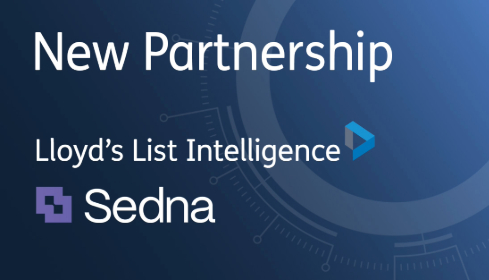
22 February 2024, London, UK - Sedna, a data-driven communication software company, and Lloyd's List Intelligence, the trusted source for maritime data and intelligence, have today announced a new partnership.
The agreement facilitates the integration of Lloyd's List Intelligence’s industry-leading vessel tracking data into Sedna’s newest AI-driven solution, Pulse. This first version of Pulse is designed to help maritime chartering teams compare fixture opportunities more easily by providing vessel data and availability information in one place.
Charterers receive thousands of emails per day containing market data about future vessel availability. To successfully fix a ship, they need to analyse all the data contained in the emails, as well as consult several other data sources. This slows them down and makes it difficult to compare key information and take action on fixtures. This complicated process results in duplicated work and manual errors, leading to missed opportunities and reduced profitability.
Pulse, a new AI-driven solution from Sedna, unlocks critical data that lives in the charterer’s inbox and turns it into easy to digest formats to drive competitive advantage. Pulse sits on top of an email inbox, extracting and consolidating data within emails into a single, customised view. This shortens the entire analysis process and allows charterers to find deals faster and generate more business.
Available as an add-on feature, Pulse will display Lloyd's List Intelligence insights on live vessel AIS positions, vessel characteristics, ownership history, sanctions compliance analysis and other risk indicators - without needing to leave the app.
The new partnership between Sedna and Lloyd's List Intelligence advances both the collaborative agenda of Sedna, who believes in an open partner ecosystem to further global trade’s digital transformation, and Lloyd's List Intelligence’s mission to bring bring clarity and transparency to seaborne trade, enabling customers to access key decision-making insights in their day-to-day work.
Commenting on this strategic partnership:
Michael Dell, CEO Lloyd's List Intelligence, said: “We are really pleased to be integrating with Sedna. The partnership showcases our commitment to reducing complexity and day to day friction for charterers, and we are aligned with Sedna’s goals to reduce operational inefficiency and mitigation of operational risks.”
Bill Dobie, Founder & CEO of Sedna added: “Data is at the heart of shipping, and having seamless access to accurate, consistent and comprehensive information isn’t just needed for future industry success, but is desired for current business needs. We are thrilled to be partnering with Lloyd’s List Intelligence because connections to trusted data sources make us confident that Pulse will become a go-to solution for charterers, unlocking their competitive edge through data-driven decision making.”
About Sedna
Sedna elevates global trade to unparalleled levels of profitability and excellence. By harnessing data-driven communication, Sedna facilitates efficient, responsive and competitive business in global trade, turning the tide towards streamlined communication and strategic insights. Across maritime, commodities and logistics & supply chain businesses, Sedna unlocks new avenues for profitability and operational excellence at the heart of the global economy.
Discover more on our website and Linkedin.
Press Contact Details
press@sedna.com
Phone: +447774335341
About Lloyd’s List Intelligence
Lloyd’s List Intelligence is the industry expert for maritime insight, data, and analytics trusted by more than 60,000 professionals across the globe to drive commercial advantage, evaluate risk, and support the efficient and lawful movement of seaborne trade.
Lloyd’s List Intelligence Media Contact: tom.amber@lloydslistintelligence.com

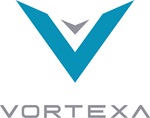

London, UK, January 29, 2024 - Vortexa, the leading real-time global analytics platform for energy and freight markets and Lloyd's List Intelligence, the trusted source for maritime data and intelligence, announce a strategic partnership. This collaboration, marked by mutual data licensing agreements, lays the foundation for future product, market analysis, editorial and commercial collaborations between the two leading players in the industry.
Vortexa customers are set to benefit significantly from access to the world's most comprehensive terrestrial AIS network. Located strategically at the heart of ports, this network delivers unparalleled global coverage that is unobstructed and precise, setting it apart from the aggregation of large amateur AIS antennas. The integration of Lloyd's List Intelligence's industry-leading vessel characteristics datasets into Vortexa's analytics will robustly enhance its freight analytics offering, strengthening both existing data and future modeling capabilities.
Fabio Kuhn, CEO Vortexa: "This collaboration marks a significant moment for Vortexa and our customers. The addition of Lloyd's List Intelligence's terrestrial AIS network and vessel characteristics datasets elevates the precision and depth of our analytics, providing unparalleled insights into the energy and freight markets."
Lloyd's List Intelligence gains access to reliable and accurate cargo flow information and state of the art ship-to-ship transfer algorithms through Vortexa's market-leading cargo tracking analytics and will collaborate with Vortexa to enhance key workflows around cargo flow and risk evaluation.
Michael Dell, CEO Lloyd's List Intelligence: "We are thrilled to embark on this journey with Vortexa. This strategic partnership showcases the benefits of bringing connected customers and workflows together all in one place, whilst offering transparency around crucial cargo flow information for risk evaluation. This aligns with our mission to continually enhance value and precision for our customers.”
The Vortexa and Lloyd's List Intelligence partnership brings together expertise, innovation and unparalleled insights. If you would like to discuss how Vortexa can support you, please get in touch here.
About Vortexa
Vortexa provides market-leading real-time data and advanced analytics for energy and freight markets. With the most accurate and complete picture of global flows, freight and inventories, Vortexa covers crude oil, refined products, LPG and LNG, across all vessel classes. We help traders, analysts and freight professionals gain a competitive edge into complex and opaque markets by making better trading decisions with confidence. Vortexa is a multidisciplinary force of over 120 employees combining the best of energy and freight expertise, data science and engineering across major hubs in London, Singapore, Houston, New York City, Geneva and the UAE.
About Lloyd’s List Intelligence
Lloyd’s List Intelligence is the industry expert for maritime insight, data, and analytics trusted by more than 60,000 professionals across the globe to drive commercial advantage, evaluate risk, and support the efficient and lawful movement of seaborne trade.
Vortexa Media Contact: natasha.adams@vortexa.com
Lloyd’s List Intelligence Media Contact: tom.amber@lloydslistintelligence.com

We are delighted to announce that Lloyd’s List Intelligence have been recognised at this year’s Regulation Asia Awards for Excellence – winning the Best TBML & Trade Compliance Solution category for our Seasearcher suite of data and analytics solutions.
The Regulation Asia awards panel credited Lloyd’s List Intelligence for its reliability and technological expertise in the trade compliance space. The judges highlighted the high-quality, accuracy and comprehensiveness of the data used in screening, along with its predictive modelling and automated vessel monitoring capabilities, saying these help firms “move away from manual vessel monitoring” and “provide certainty on risk”.
Further to this win, Lloyd’s List Intelligence were Highly Commended in the Best Data Provider category in the Fraud & Financial Crime category for our suite of data solutions with the awards panel crediting our approach to ensure our data is high-quality, accurate and comprehensive, as well as our ability to empower institutions to conduct comprehensive due diligence and enhance risk management. “By ensuring accurate and complete data, Lloyd’s List Intelligence gives firms certainty on risk and helps them avoid possible penalties associated with AML and sanctions non-compliance,” remarked one judge on the awards panel.
The Regulation Asia Awards for Excellence recognises financial institutions, technology companies, legal and consulting firms, exchanges and other players that help ensure the highest regulatory compliance standards are upheld in the financial industry. Each year, senior industry practitioners serve on a judging panel to help assess and score each submission to determine the winning entrants.
For a full list of the Award 2023 winners, visit www.regulationasia.com/awards.
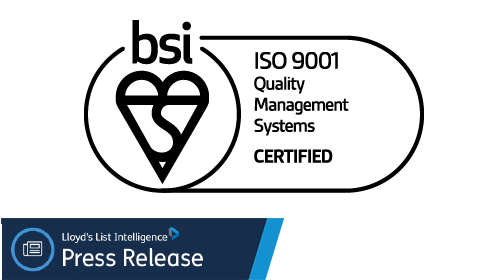
Lloyd’s List Intelligence has been awarded the ISO 9001:2015 quality management standard for our Seasearcher solution and full suite of data and insights applications, following an independent, nine-month assessment by the British Standards Institution (BSI). The qualification recognises our expertise in data quality, handling and security, evidenced through our proprietary, class-leading data quality framework, COACT. This governs how data is gathered, cleaned, enhanced and shared and ensures a rigorous focus on Consistency, Origin, Accuracy, Completeness and Timeliness.
Launched in 1987, ISO 9001 is the world’s leading quality management standard, with over one million organisations in 178 countries certified. It provides an evidence-based framework to help companies optimise day-to-day operations and plan for growth, with a focus on customer needs and continuous improvement.
Our ISO 9001 accreditation has been awarded by the BSI – the UK’s national standards body. The standard investigates seven core aspects of business: customers, leadership, engagement, processes, improvement, evidence and relationships. Organisations achieving the standard must define their operations and demonstrate how essential functions, such as staff training, customer service and supply chain management, follow best practice. Measuring performance against quantifiable targets is a key requirement for ISO 9001, as is a thorough evaluation of risk. Companies also have to evaluate the threat posed by events such as staff shortages, equipment failures or rising costs, and have plans in place to mitigate them.
ISO 9001’s emphasis on consistency and control is particularly relevant to Lloyd’s List Intelligence: our data is a keystone in a vast, complex and economically vital industry, so the accuracy, quality, completeness and timeliness of our information is fundamentally important.
Parvin Conners, Chief Operating Officer said, “Following a rigorous nine-month long assessment we were delighted to be awarded ISO9001:2015 certification. As our COACT framework demonstrates, data quality is central to the purpose of Lloyd’s List Intelligence, and our suite of workflow solutions. This accreditation acknowledges the effort that goes into monitoring and maintaining this. It also demonstrates that our customers’ needs and interests are at the heart of our business, and that we have a world-class organisation dedicated to maintaining the highest standards of service, data handling and security.

Financial technology solutions provider MonetaGo has selected Lloyd’s List Intelligence as a data partner to strengthen its real-time interruption of fraudulent trade financing attempts through the authentication of key trade documents.
MonetaGo is the world’s leading provider of best-in-class fraud detection and prevention solutions for trade finance. Its Secure Financing system is the first third-party service available through Swift API, accessible to 11,000+ institutions worldwide on the Swift network.
Secure Financing enables banks, non-bank financial institutions, fintechs and trade finance funds to verify documents such as invoices, bills of lading, warehouse receipts and purchase orders, before deciding to finance them. The solution hashes relevant information from documents to create a unique fingerprint, which is compared in MonetaGo’s global registry to identify if the same document has been used in a prior financing.
The system also provides financiers with an additional layer of security against potential fraud attempts by verifying documents against trusted data sources to identify falsification or tampering.
Under the new partnership, MonetaGo will incorporate Lloyd’s List Intelligence’s trade and maritime data in the Secure Financing system, to provide Bill of Lading verification, container location and loading, vessel tracking and container movements for the entire voyage, including actual ports of load and discharge, vessels involved and transhipment points on route to destination.
“Lloyd’s List Intelligence is the industry leader in providing actionable insight into the global maritime industry, including the most complete near-time maritime data covering almost 90% coverage of global bill of lading issuances,” says Chas McNee, Strategic Partnership Manager at Lloyd’s List Intelligence. “Integrating our analytics into MonetaGo’s Secure Financing system furthers our mission to drive commercial advantage, evaluate risk, and support the efficient and lawful movement of seaborne trade.”
Financiers can now leverage Lloyd’s List Intelligence vessel information to authenticate and verify the underlying information when reviewing trade documents within the Secure Financing system, thereby mitigating the risk of forged documents being presented for financing.
“Working hand in hand with partners worldwide, we have made tremendous progress in the fight against trade finance fraud,” says Neil Shonhard, CEO of MonetaGo. “In collaboration with Lloyd’s List Intelligence, we are now further strengthening financiers’ visibility into the validity of transaction data submitted by borrowers, delivering on our goal of ensuring bad actors have nowhere to hide.”
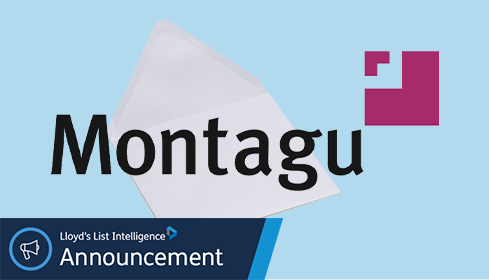
Following our announcement in early August, we’re delighted now to have closed on our sale to Montagu, a leading mid-market private equity firm committed to finding and growing businesses that make the world work.
Montagu brings proven growth capabilities to help companies achieve their ambitions and unlock their full potential. Partnering with Montagu supports our continued delivery of innovative maritime analytics for customers, and we are confident of a bright and prosperous future under their ownership.
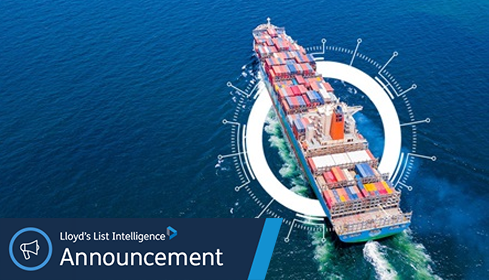
Lloyd’s List Intelligence have partnered with Dow Jones to bring fast and efficient dual use goods screening to its Seasearcher customers.
Export Control data from Dow Jones is now integrated with Seasearcher, allowing users to search across a number of lists all in one place to expose dual use goods risk, investigate export restrictions and bring to light potential links to financial crime.
Dual Use Goods screening data is delivered as an enhancement to the Seasearcher platform and will soon be made available via API.
In an increasingly pressurised market, professionals in maritime trade finance and other shipping sectors are under scrutiny to detect whether a shipment is carrying goods that have a potential dual use in armaments. They also need to check whether that shipment is licenced under regional or national regulations. Any possible connection to money laundering is another key concern.
Seasearcher Dual Use Goods will enable maritime compliance professionals to overcome these challenges. Its industry-wide benefits include:
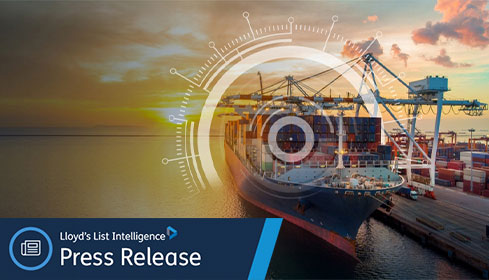
27% of vessels fail to arrive within 24 hours of their published Estimated Time of Arrival. This lack of accurate AIS-based data puts pressure on ports, hampers logistics and pushes up costs. This could soon change, however, thanks to transformative new analytics from Lloyd’s List Intelligence, the maritime data experts, trusted by more than 60,000 professionals across the globe to power their decisions in operations, compliance, and risk management.
Predictive Fleet Analytics is the first ever ‘air traffic control’ for the world’s commercial shipping fleet. It combines near-real-time data collected from 3000 sources, resulting in over 327 million AIS vessel positions monthly across the global fleet. Specially designed advanced analytics, AI, and machine learning transform this unique data into accurate estimated times of arrival into port (ETA), arrival times at berth (ETB), and times of departure (ETD) for key active commercial vessels, along with current and future estimates of port congestion.
Lloyd’s List Intelligence are the first to bring ETBs and ETDs to market, and no other provider brings together a broader range of predicted, actionable insight.
Industry-wide problems
Currently, over a third (36%) of Automatic Identification System (AIS) messages are missing ETA data, while another 27% of vessels fail to arrive within a day of their published ETA. Even destination data is unreliable, with 63% of vessels publishing one port destination but ending up at another (source: Lloyd’s List Intelligence 2020 AIS message analysis).
A powerful solution, requested by customers
Destination and ETA data gaps represent one of the most severe business challenges to the supply chain – impacting the ability of businesses to work efficiently, effectively and profitably:
Informed by over 100 customer and stakeholder interviews across companies and government organisations, Predictive Fleet Analytics has been built in response to these widespread industry challenges.
Delivered as API data and integrated into the Seasearcher platform, Predictive Fleet Analytics helps customers gain greater certainty around estimated destination, arrival, berthing, and departure times, along with port congestion status and waiting times. This greater level of insight is key to more efficient voyages and port operations and the optimal use of vessels, fuel, port facilities and services, and the teams that operate them all, resulting in time and cost savings.
With analytics powerhouse partner SAS, a leader in artificial intelligence (AI), data mining, modelling and forecasting, Lloyd’s List Intelligence have developed this pioneering new method of calculating, predicting, and learning from vessel movements and behaviours in ways that were not possible before.
The AI and machine learning models predict destinations with an accuracy of 70%, ETA to port within +/- 10 hours, and ETB to within 1-2 hours, catering for key vessel types in the commercial fleet operating to both fixed and non-fixed schedules.
“Predictive Fleet Analytics allows our customers to let decisions on scheduling and routes be driven by the best quality data, so that shipping companies can save on resources and costs,” says Parvin Conners, Vice President of Product and Data for Lloyd’s List Intelligence. “This new level of prediction around destinations and arrivals helps ports to optimise their services and facilities and for maritime servicing businesses to run more smoothly. All of this is possible thanks to the strength of our data and analytics and how we use AI and machine learning.”

Leading private equity firm Montagu has announced an agreement to acquire Maritime Intelligence, commonly known as Lloyd’s List Intelligence, from Informa plc.
Lloyd’s List Intelligence is a leading provider of maritime data, insight and intelligence, widely used across the shipping ecosystem, extending to the finance, legal, academic, insurance and government sectors. Its market-leading products provide reliable, high-quality data and actionable analytics, which help professionals make informed decisions on compliance, risk management and operations.
The business consists of maritime data and analytics, legal reference sources and insight services, including Lloyd’s List, the industry-leading source for global shipping news, analysis and insight with origins stretching back to 1734, and Insurance Day.
Maritime Intelligence chief executive, Michael Dell, said: “We are delighted to join Montagu and the suite of knowledge-led and tech-enabled businesses in their portfolio.
“Partnering with Montagu supports our continued delivery of innovative maritime analytics for customers and we are confident of a bright and prosperous future under their leadership.”
Montagu director Edward Shuckburgh added: “Maritime Intelligence is a unique business with a historic legacy and reputation hard-won over hundreds of years. It is complementary to our portfolio of data and analytics investee companies with strong current growth and revenue acceleration potential. We are pleased to welcome the business to the Montagu family.”
The Montagu portfolio includes global aerospace and defence information service, Janes.

Lloyd’s List Intelligence are pleased to announce a partnership with TradeSun to provide data to the TradeSun platform that supports enhanced risk evaluation for trade compliance professionals.
In response to rapidly evolving international sanctions and emerging risk, TradeSun clients can now access Lloyd’s List Intelligence datasets for vessel tracking and ownership and Bill of Lading tracking from within their platform. It follows Lloyd’s List Intelligence launching vessel risk ratings that help finance and compliance professionals evaluate risk more easily.
Lloyd’s List Intelligence’s expanded dataset provides vessel risk indicators and invaluable Bill of Lading tracking for the whole voyage, including transshipment information. This is sourced from Lloyd’s List Intelligence quality assessed vessel characteristics, ownership and real-time tracking data, all of which help TradeSun customers to reduce significantly the risk of non-compliance.
The TradeSun Platform extracts and standardises transaction data, performs multiple compliance activities in real-time, intercepting illicit activities in flight, and ensures trade documents meet international standards (UCP 600/ISBP). Comprehensive reporting, audit trails and prescriptive analytics are provided across the platform.
“With global regulators increasingly turning to sanctions as a pressure tool, players in trade must be vigilant in adhering to the evolving regulatory landscape,” says Nigel Hook, TradeSun CEO. “We’ve partnered with Lloyd’s List Intelligence to further enhance TradeSun’s screening capabilities and give customers confidence in compliance by combining industry-leading data with top tier technology.”
Lloyd’s List Intelligence, part of Informa, has been at the heart of the industry for over 300 years, providing the intelligence, data and expertise that support the shipping market and keep global trade moving efficiently.
Thomas Richmond, Strategic Partnerships Manager at Lloyd’s List Intelligence, noted “Compliance professionals around the world need more than great data. They need the kind of greater insight that our unique data and analytics can bring. This powerful and timely addition to the TradeSun Platform will help professionals meet the escalating trade compliance standards.”
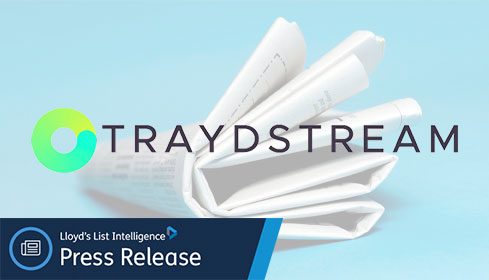
Following the launch of vessel risk ratings that help trade finance and compliance professionals evaluate operational risk more easily, Lloyd’s List Intelligence are pleased to announce their partnership to provide this data on the Traydstream platform.
To further support trade compliance needs, clients can now access Lloyd’s List Intelligence vessel information when reviewing trade documents for Letters of Credit, Collections and Open Account transactions from within the Traydstream platform.
The expanded data provides vessel risk indicators and invaluable Bill of Lading tracking for the whole voyage, including transshipment information. This is sourced from Lloyd’s List Intelligence quality assessed vessel characteristics, ownership and real-time tracking data.
Traydstream’s OCR engine extracts all the necessary data points to provide a fully automated document checking service as part of an integrated compliance review process.
“Traydstream platform efficiency and Lloyd’s List Intelligence’s vessel and voyage analytics enable better decision making and reduce the costs, complexities and risk of trade,” said Uzair Bawany, Chief Commercial Officer at Traydstream. “Our mission has always been to focus on the pain points that document checkers face, by ensuring that they have the right information, at the right time.”
Lloyd’s List Intelligence, part of Informa, has been at the heart of the industry for over 300 years, providing the intelligence, data and expertise that support the shipping market and keep global trade moving efficiently.
“Working with select partners like Traydstream enables us to further support customers with managing their day-to-day work more efficiently. Combining our vessel and voyage risk analytics and maritime data expertise with Traydstream’s platform furthers our continuous mission to innovate and support ever-evolving market needs,” noted Thomas Richmond, Strategic Partnerships Manager at Lloyd’s List Intelligence.
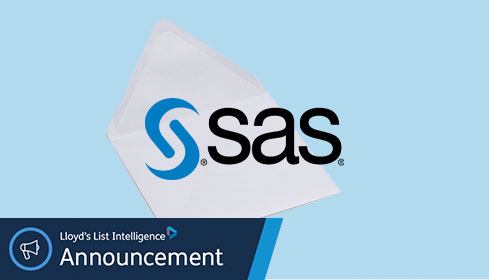
We are delighted to announce our partnership with analytics powerhouse SAS, a leader in artificial intelligence (AI), data mining, modelling and forecasting. We too believe in turning data into answers so that everyone can make better decisions.
SAS’s powerful AI will be an important part of new and deeper levels of insight into the behaviours of vessels and fleets using our most complete and verified maritime data. With a number of AI-enhanced services currently in development, our collaboration will set a new standard of insight for the maritime industry.
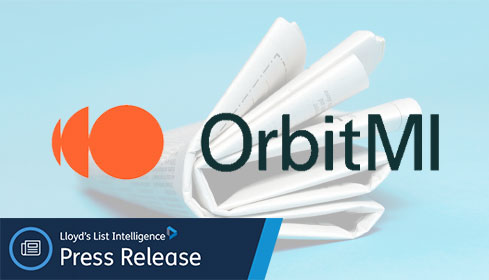
OrbitMI, Inc., a global provider of maritime SaaS software, today announced its partnership with Lloyd’s List Intelligence, the trusted expert partner providing actionable insight into the global maritime industry for 300 years. OrbitMI has partnered with the company, which is part of Informa PLC, as an additional provider of both vessel characteristics as well as company and ownership data for tankers.
The data will be integrated and visualized throughout Orbit, the company’s suite of integrated maritime solutions. Orbit is explicitly designed in its product architecture with an integration layer to pull in multiple systems and data feeds into one unified interface, allowing the company to respond to customer demands.
2050 compared with a 2008 baseline. Given the historically and financially assumed 20-year lifespan of vessels, the maritime sector must ensure that zero-emission vessels are operating on a commercial scale on deep-sea trade routes by 2030, opening the way for a large-scale deployment in the 2030s and 2040s.
“At OrbitMI, we’re looking to collaborate and build partnerships with like-minded, world-class, customer-centric companies like Lloyd’s List Intelligence who allow us to deliver a technology solution that fits our customers’ workflow,” said Ali Riaz, Chairman and CEO of OrbitMI. “Lloyd’s List Intelligence is one of the most respected and influential brands in maritime and have a shared vision of transparency and sharing within our industry.”
The unparalleled real-time data from Lloyd’s List Intelligence will allow OrbitMI to offer its customers with insights that empower them to make better decisions, and ultimately move their business forward.
“Being data-driven used to be an aspiration,” added Riaz. “Now, it’s imperative.”
Following on the heels of a record-setting webinar in June of last year on maritime intelligence, the two organizations continued to expand their partnership with research and successful lead generation programs. The ongoing discussions throughout 2020 have all led to today’s announcement.
“OrbitMI is both nimble and innovative,” said Michael Dell, President, Lloyd’s List Intelligence. “We have spent the last year working closely with OrbitMI and building this partnership. We are happy to be part of a solution that is driving the transparency and the ever-evolving transformation of the maritime industry."
About OrbitMI
OrbitMI is a software company headquartered in New York City with offices in Sweden, Norway Serbia and Greece, supported by our global partners, whose purpose is to unlock the value in the data the maritime sector generates. By transforming raw data into actionable insights and predictive intelligence, OrbitMI helps maritime become more efficient, profitable, and sustainable.